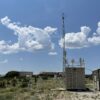A new coronavirus descendant related to Delta, called AY.4.2, is being closely monitored by scientists in the US, UK, and Israel.
AY.4.2 is still “very rare” in the US, according to the Centers for Disease Control and Prevention (CDC).
“It is well below 0.05 percent of all our sequenced viruses, with less than 10 reported in our database so far,” the CDC said in a statement sent to Insider on Wednesday.
Meanwhile, AY.4, the parent lineage of the new variant, “represents around 11 percent of the Delta viruses in the United States,” the CDC said.
While many different AY lineages of the Delta variant have been documented to date, AY.4.2 has caught the attention of virus-watchers around the world recently because it has two changes located on the viral spike protein, which could perhaps give it some advantages. But it’s unclear if that’s the case yet.
“At this time … there is no evidence that the sub lineage A.Y.4.2 impacts the effectiveness of our current vaccines or therapeutics,” the CDC said.
The UK Health Security Agency, meanwhile, said on Friday that AY.4.2 is currently “expanding” in England and “increasing in frequency,” while Israeli health officials reported their first case of it on Tuesday.
The AY.4.2 lineage has attracted attention because it has risen in frequency in the UK over recent weeks, now representing ~7% of all sequenced strains. It remains exceptionally rare anywhere else (only 2 strains found in the US so far).
4/ pic.twitter.com/j4VENBKBsA— Prof Francois Balloux (@BallouxFrancois) October 16, 2021
Former Food and Drug Administration Commissioner Scott Gottlieb said on Twitter over the weekend that “we need urgent research” to figure out how much of a threat the new Delta descendant really poses.
It’s possible that AY.4.2 could turn out to be slightly more transmissible than other versions of the virus we’ve seen so far. But that’s no reason to panic.
“This is not a situation comparable to the emergence of Alpha and Delta that were far more transmissible (50 percent or more) than any strain in circulation at the time,” Professor Francois Balloux, Director of the University College London Genetics Institute, said Tuesday.
“Here we are dealing with a potential small increase in transmissibility that would not have a comparable impact on the pandemic.”
AY.4.2 has been identified ‘on occasion’ in the US
“We have, on occasion, identified the sub-lineage here in the United States, but not with recent increased frequency or clustering to date,” CDC director Rochelle Walensky said during a White House coronavirus briefing Wednesday morning, referencing AY.4.2.
(The UK, which has noticed a larger uptick in AY.4.2 cases recently, has been far better than the US at tracking and sequencing coronavirus variants in real time during the pandemic.)
Jeffrey Barrett, a genomics expert leading the COVID-19 initiative at the Wellcome Sanger Institute, said it’s still possible that AY.4.2 has just had a bit of “epidemiological luck” in the UK recently.
Professor Balloux agreed.
“In Denmark, the other country that besides the UK has excellent genomic surveillance in place, it reached a 2 percent frequency but has gone down since,” he said of the subvariant.
This article was originally published by Business Insider.
More from Business Insider:



